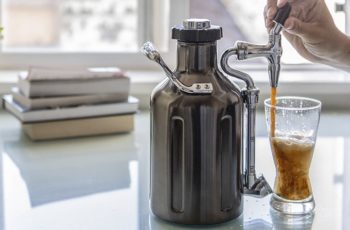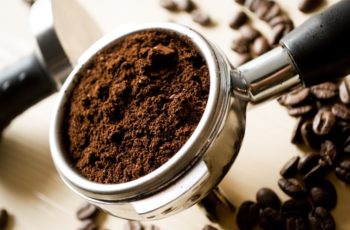Table of Contents
HOW STRONG IS VIETNAMESE COFFEE? GOOD TIPS AND GUIDES IN 2024.
Vietnamese coffee has gained a reputation as one of the strongest and most flavorful coffees in the world. This Southeast Asian country’s coffee culture has a rich history that dates back to the French colonial era, and it has evolved over time to create a unique and delicious brew that stands out from other coffee varieties.
Vietnamese coffee is made with a blend of robusta and arabica beans, which are roasted and ground to a fine powder before being brewed with a metal filter called a phin. The resulting coffee is rich, bold, and often served with sweetened condensed milk.
In this article, we’ll explore the world of Vietnamese coffee and provide tips and guides for making the perfect cup at home or in a coffee shop. Whether you’re a coffee enthusiast or just curious about this strong and delicious brew, you’re in for a treat.
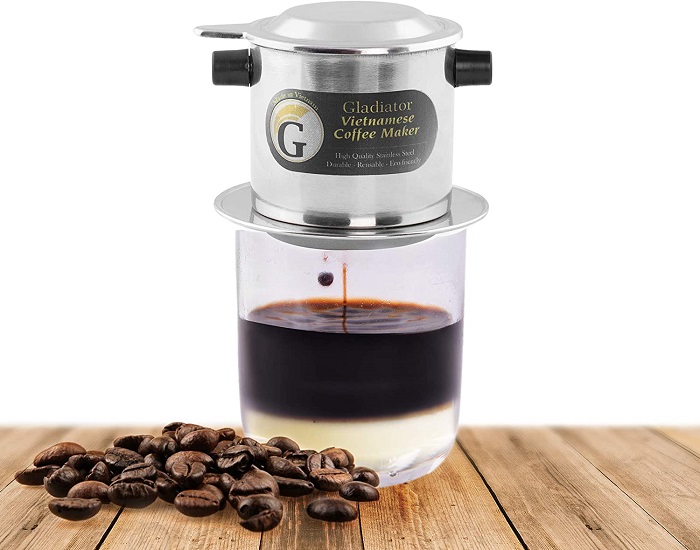
HOW STRONG IS VIETNAMESE COFFEE?
1. WHAT IS VIETNAMESE COFFEE?
Vietnamese coffee is a type of coffee that originates from Vietnam and is known for its strong and bold flavor. It is typically made by combining a blend of robusta and arabica coffee beans, which are roasted and ground to a fine powder before being brewed using a special metal filter called a phin.
The phin allows hot water to slowly drip through the grounds, resulting in a strong and flavorful coffee concentrate. Vietnamese coffee is often served with sweetened condensed milk, giving it a creamy and slightly sweet taste. This coffee is a popular drink in Vietnam and has gained a following around the world for its unique flavor and preparation methods.
You can see How Strong Is Vietnamese Coffee as below:
2. HOW MANY TYPES OF VIETNAMESE COFFEE?
There are several types of Vietnamese coffee, each with its own unique characteristics and flavor profiles. Here are some of the most common types:
- Ca Phe Sua Da: This is the most popular type of Vietnamese coffee, which is made by combining strong coffee with sweetened condensed milk and serving it over ice.
- Ca Phe Den: This is a black coffee that is made without milk or sugar, resulting in a strong and bitter flavor.
- Ca Phe Phin: This is the traditional way of making Vietnamese coffee using a phin filter, resulting in a bold and intense coffee flavor.
- Ca Phe Chon: Also known as “weasel coffee,” this is a specialty coffee made from beans that have been eaten and excreted by weasels, resulting in a unique and expensive flavor.
- Ca Phe Trung: Also known as “egg coffee,” this is a sweet and creamy coffee made with egg yolks, sugar, and condensed milk.
These are just a few examples of the types of Vietnamese coffee available. Each type has its own unique flavor and preparation method, making Vietnamese coffee a diverse and exciting part of coffee culture.
There are the answer for How Strong Is Vietnamese Coffee as below:
3. HOW TO CHOOSE GOOD VIETNAMESE COFFEE?
Vietnamese coffee is known for its rich and strong flavor, and there are a few things to keep in mind when choosing good Vietnamese coffee:
- Look for quality beans: The first step to a great cup of coffee is quality beans. Look for beans that are freshly roasted and have a strong aroma. Some of the best coffee beans in Vietnam come from the central highlands region.
- Choose the right blend: Vietnamese coffee is typically a blend of Robusta and Arabica beans. Robusta beans provide the strong, earthy flavor while Arabica beans add a smoothness to the overall taste. Look for a blend that suits your taste preferences.
- Check the roast level: Vietnamese coffee is usually roasted dark, which gives it a strong flavor and aroma. However, some people prefer a lighter roast for a milder taste. Choose a roast level that matches your taste.
- Consider the brewing method: Vietnamese coffee is traditionally brewed using a phin filter, which is a small metal filter that sits on top of a cup. However, you can also brew it using a French press or pour-over method. Choose the brewing method that works best for you.
- Check for certifications: Look for coffee that has been certified by organizations like Fair Trade or Rainforest Alliance. These certifications ensure that the coffee has been grown and processed sustainably and ethically.
- Check the packaging: Look for coffee that is packaged in airtight bags or containers to ensure freshness. Coffee that is exposed to air can quickly lose its flavor and aroma.
By following these tips, you can choose a great Vietnamese coffee that suits your taste preferences and meets your quality standards.
We give the answer for How Strong Is Vietnamese Coffee as below:
4. HOW STRONG IS VIETNAMESE COFFEE?
Vietnamese coffee is known for its strong flavor and high caffeine content. It is usually made with Robusta coffee beans, which contain more caffeine than Arabica beans. Additionally, Vietnamese coffee is often brewed using a phin filter, which allows for a slower extraction process and results in a stronger brew.
The caffeine content of Vietnamese coffee can vary depending on the brewing method and the amount of coffee used. However, on average, an 8-ounce cup of Vietnamese coffee contains around 200 milligrams of caffeine, which is roughly double the amount found in a typical cup of coffee.
It’s worth noting that the strength of Vietnamese coffee can also be influenced by the addition of sweetened condensed milk, which is a common ingredient in traditional Vietnamese coffee. The milk can add sweetness and creaminess to the coffee, but it can also make it more potent.
Overall, if you’re looking for a strong cup of coffee with a bold flavor and high caffeine content, Vietnamese coffee is definitely worth a try.
Above is the answer for How Strong Is Vietnamese Coffee. Now, let’s see some tips and guides on making Vietnamese Coffee.
TIPS AND GUIDES ON MAING VIETNAMESE COFFEE.
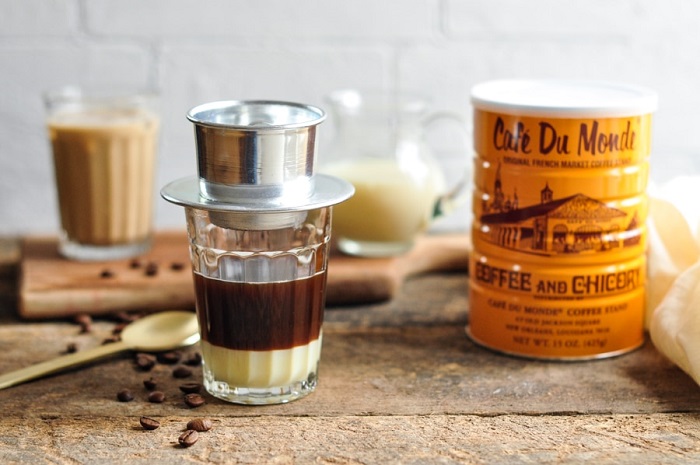
1. HOW TO MAKE VIETNAMESE COFFEE?
To make Vietnamese coffee, you will need the following:
- Vietnamese coffee grounds (preferably a blend of Robusta and Arabica)
- Sweetened condensed milk
- A phin filter (a small metal filter that sits on top of a cup)
- Hot water (just off the boil)
Here are the steps to make Vietnamese coffee:
- Begin by placing a heaping tablespoon of coffee grounds into the phin filter.
- Use a spoon or tamper to press down the coffee and level it out.
- Place the phin filter on top of your cup or mug.
- Pour a small amount of hot water (just enough to wet the coffee grounds) into the phin filter and wait for 10-15 seconds to allow the coffee to bloom.
- Add more hot water to the phin filter, filling it up to the top.
- Allow the coffee to drip through the filter and into the cup. This can take anywhere from 5-10 minutes, depending on the coffee and your desired strength.
- While the coffee is brewing, spoon 1-2 tablespoons of sweetened condensed milk into the bottom of your cup.
- Once the coffee has finished brewing, stir the sweetened condensed milk and coffee together until well combined.
- Enjoy your delicious cup of Vietnamese coffee!
Note: If you prefer your coffee iced, you can pour the hot coffee over a glass filled with ice cubes and sweetened condensed milk. The ice will melt and dilute the coffee, creating a refreshing and sweet drink.
You can refer How Strong Is Vietnamese Coffee as above.
2. SOME TIPS ON MAKING VIETNAMESE COFFEE.
Here are some additional tips to help you make the perfect cup of Vietnamese coffee:
- Use high-quality coffee: For the best flavor, use high-quality Vietnamese coffee grounds that are freshly roasted and have a strong aroma. Look for a blend of Robusta and Arabica beans that suits your taste.
- Grind the coffee correctly: The coffee grounds used for Vietnamese coffee should be fine and consistent, similar to espresso grounds. Use a burr grinder to ensure a consistent grind size.
- Use the right amount of coffee: The amount of coffee you use will affect the strength of your brew. Start with a heaping tablespoon of coffee grounds and adjust based on your taste preferences.
- Be patient: Vietnamese coffee is brewed using a slow drip method, so it takes longer than a typical cup of coffee. Be patient and allow the coffee to drip through the phin filter slowly to ensure a strong and flavorful brew.
- Experiment with the brewing time: Depending on your desired strength, you can adjust the brewing time by adding more or less hot water to the phin filter. Play around with the brewing time to find your perfect cup of Vietnamese coffee.
- Use sweetened condensed milk: Sweetened condensed milk is an essential ingredient in traditional Vietnamese coffee. It adds sweetness and creaminess to the coffee, balancing out the strong flavor. Use 1-2 tablespoons of sweetened condensed milk per cup of coffee, or adjust based on your taste preferences.
- Serve with ice: If you prefer iced coffee, pour the hot coffee over a glass filled with ice cubes and sweetened condensed milk. The ice will melt and dilute the coffee, creating a refreshing and sweet drink.
By following these tips, you’ll be able to make a delicious cup of Vietnamese coffee that’s rich, flavorful, and satisfying.
Please see How Strong Is Vietnamese Coffee as above.
3. COMMON MISTAKE ON MAKING VIETNAMESE COFFEE.
Here are some common mistakes to avoid when making Vietnamese coffee:
- Using the wrong coffee: Vietnamese coffee should be made with a blend of Robusta and Arabica beans, preferably freshly roasted. Using low-quality coffee or the wrong type of beans can result in a weak and unsatisfying brew.
- Using too much or too little coffee: The amount of coffee used can greatly affect the strength and flavor of Vietnamese coffee. Using too much coffee can result in a bitter and overpowering brew, while using too little can result in a weak and watery brew.
- Grinding the coffee incorrectly: The coffee used for Vietnamese coffee should be finely ground, similar to espresso. Grinding the coffee too coarsely can result in a weak and under-extracted brew, while grinding it too finely can cause the coffee to clog the filter.
- Using water that’s too hot or too cold: The water used for Vietnamese coffee should be just off the boil, around 195-205°F (90-96°C). Using water that’s too hot can result in a burnt and bitter taste, while using water that’s too cold can result in a weak and under-extracted brew.
- Rushing the brewing process: Vietnamese coffee is brewed using a slow drip method that takes time. Rushing the process by pouring too much water at once or stirring the coffee too soon can result in a weak and unsatisfying brew.
- Forgetting to stir the sweetened condensed milk: If you’re adding sweetened condensed milk to your Vietnamese coffee, be sure to stir it well before adding the coffee. Failing to stir it can result in clumps of condensed milk at the bottom of your cup.
By avoiding these common mistakes, you can ensure a delicious and satisfying cup of Vietnamese coffee.
Please refer How Strong Is Vietnamese Coffee as above.
FAQS ABOUT HOW STRONG IS VIETNAMESE COFFEE?
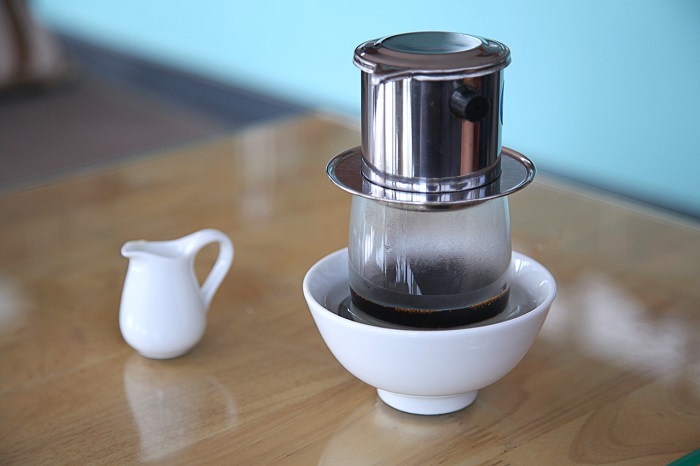
1. Question 1: How strong is Vietnamese coffee compared to other types of coffee?
Answer: Vietnamese coffee is typically stronger than most types of coffee due to the use of a blend of Robusta and Arabica beans and the slow drip brewing method.
2. Question 2: Does the strength of Vietnamese coffee vary depending on the brewing method?
Answer: Yes, the strength of Vietnamese coffee can vary depending on the brewing method used. Using a phin filter to slowly drip the coffee can result in a stronger brew than using a French press, for example.
3. Question 3: Is Vietnamese coffee stronger than espresso?
Answer: Vietnamese coffee is generally not as strong as espresso, but it has a similar intensity and bold flavor profile.
There are the answer for How Strong Is Vietnamese Coffee as above.
4. Question 4: How much caffeine is in Vietnamese coffee?
Answer: The amount of caffeine in Vietnamese coffee can vary depending on the type of beans used and the brewing method, but it’s generally higher than most types of coffee.
5. Question 5: Can the strength of Vietnamese coffee be adjusted?
Answer: Yes, the strength of Vietnamese coffee can be adjusted by using more or less coffee grounds, adjusting the brewing time, or adding more or less water.
6. Question 6: Is Vietnamese coffee too strong for people who are sensitive to caffeine?
Answer: Vietnamese coffee may be too strong for people who are sensitive to caffeine, as it contains a higher amount of caffeine than most types of coffee.
7. Question 7: Can the sweetness of Vietnamese coffee balance out its strength?
Answer: Yes, the sweetness of the condensed milk used in Vietnamese coffee can help balance out its strength and bitterness, resulting in a smooth and enjoyable cup.
8. Question 8: Is Vietnamese coffee suitable for people who prefer milder coffee?
Answer: Vietnamese coffee may not be suitable for people who prefer milder coffee, as it has a bold and strong flavor profile.
Please see the answer for How Strong Is Vietnamese Coffee as above.
9. Question 9: Can Vietnamese coffee be diluted to reduce its strength?
Answer: Yes, Vietnamese coffee can be diluted by adding more water or milk to reduce its strength and intensity.
10. Question 10: Is Vietnamese coffee a good option for people who need a caffeine boost?
Answer: Yes, Vietnamese coffee is a great option for people who need a caffeine boost, as it contains a higher amount of caffeine than most types of coffee.
Conclusion:
In conclusion, Vietnamese coffee is known for its strength and intensity. The coffee is typically made with dark roast beans and is often brewed using a special Vietnamese coffee filter called a phin. The resulting coffee is strong, bold, and highly caffeinated, with a distinctive flavor profile that includes notes of chocolate and spice.
Because of its high caffeine content and intense flavor, Vietnamese coffee is often enjoyed in small servings or diluted with sweetened condensed milk.
It’s important to note that the strength of Vietnamese coffee can vary depending on factors such as the type of beans used and the brewing method, so it’s always a good idea to check with the coffee shop or restaurant to see how strong their particular brew is. Overall, if you’re a fan of strong, bold coffee, Vietnamese coffee is definitely worth trying.
Read more:
Top 12 Best Duo Coffee Maker Reviews in 2024
Top 10 Best Single Serve Coffee Maker no Pods Review in 2024
